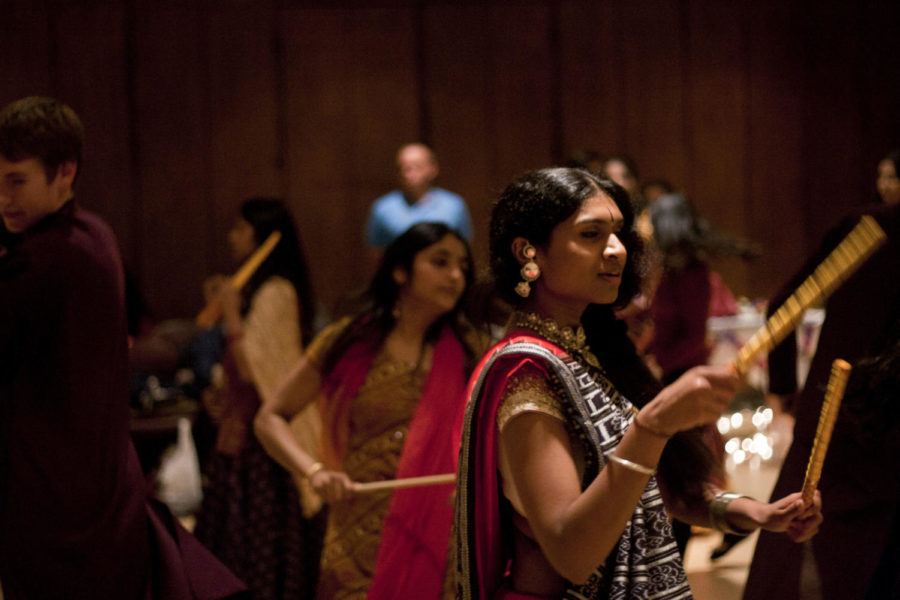Dandiya Night celebrates Indian culture, exceeds expectations
The Indian Students Association hosted Dandiya Night on Oct. 15, to enjoy the traditional Indian Dandiya Raas, or stick folk dance. Priya Ravindran, junior in chemical engineerng, spins and adds her own flare to the basic steps of the dance as she moves from partner to partner in the inner circle of the dance.
October 16, 2011
The Indian Students’ Association hosted its annual Dandiya Night on Saturday, drawing a sellout crowd for an evening of traditional dance and cuisine.
Held in the Memorial Union’s Sun Room, the event gave Indian students a chance to perform dances passed down through millennia, and offered non-Indians the chance to learn them.
“Our basic goal with ISA is to promote the culture which the students have left,” said Vernon Mascarenhas, ISA public relations officer and sophomore in chemical engineering.
“Not only that,” he added, “we want to bring the experience to the Americans.”
Nidhi Shah, ISA member and graduate student in food science and human nutrition, fulfilled both those aims Saturday evening, leading attendees in two styles of Indian folk dance. She began by demonstrating Dandiya Raas, which is performed by dancers who form two circles. In this dance, one circle encloses the other, and the two revolve in opposite directions. It takes its name from the “dandiya” (Hindi for “sticks”) that dancers wield and strike together as they move. These are meant to represent the sword with which the Hindu goddess Durga vanquished the demon king Mahishasura.
Shah had explained earlier that Dandiya Raas was typically associated with Navratri, a deity-worship festival with a name meaning “nine days.” With a date governed by the Hindu lunar calendar, it falls on a different span of days every year. This year, it ended Oct. 5.
“We have our goddess, and there are nine different forms of goddesses,” she said. “We’re welcoming her to Earth.”
Durga, known as “the inaccessible,” is one of the goddess forms worshipped during the holiday. Like the other eight, she is an incarnation of Shakti, a personified divine force who is said to have birthed all creation.
As well as teaching attendees Dandiya Raas, Shah showed them Garba, a dance that has some similarities to the former style, but is performed barehanded. Shah said it allowed more freedom of movement and opportunity for improvisation than Dandiya Raas.
Her demonstrations were followed by a video promoting the coming November’s Diwali Night, a traditional Indian dinner and a period of non-guided dance.
Near the event’s end, Priyanka Nandi, ISA public relations officer and graduate student in architecture, said the association was pleased with the number of people the event drew.
“It was way more than we expected.”







